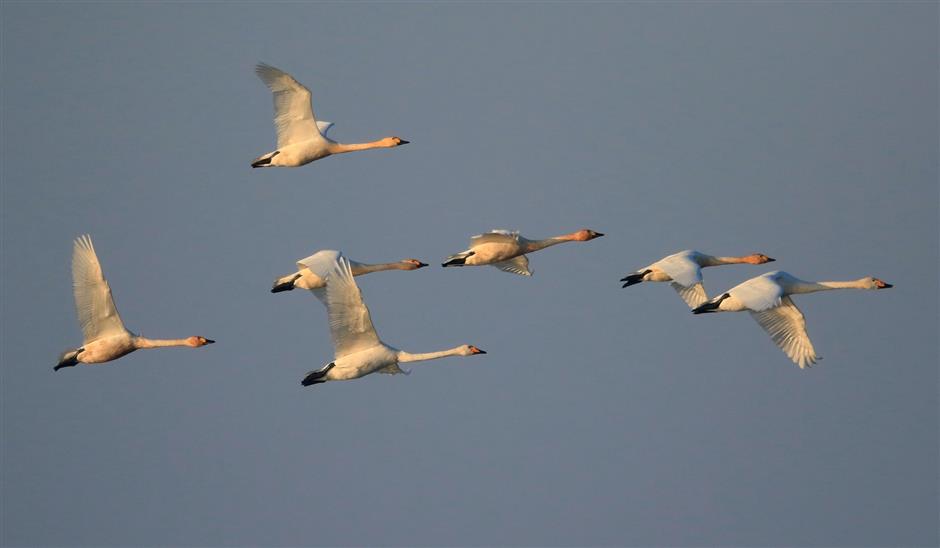Tundra swans spend winter at Chongming Island reserve

Nearly 120 Tundra swans are spending the winter at a national reserve on Chongming Island, a record high, the city's greenery and sanitation administration bureau said on Tuesday.
The Tundra swans, a second-level state-protected animal, often arrive at the wetland in October and return to China's northeast or Siberia in March to breed.
In 2016, Shanghai Chongming Dongtan National Nature Reserve saw 62 Tundra swans spend the winter there. They stayed for almost five months, creating a record for the number of Tundra swan varieties and the longest duration of stay since the reserve was established in 1998.
Last month reserve workers recorded 118 Tundra swans in the wetland's ecological restoration areas, nearly double the number in 2016.
According to Dr Wu Wei, a researcher with the reserve, the increase could be attributed to work on clearing invasive plants and cultivating grasses that Tundra swans eat.
"In the past years, we often saw a dozen Tundra swans in winter and sometimes even none," Wu told Shanghai Daily. "But with the cleanup of spartina alterniflora — an invasive grass — which was launched in 2013, more room is created for other plants to grow, including the grasses that the anseriformes family of birds like."
Wu added: "The condition of the Tundra swans living in the reserve is steady and we expect that they can stay here until March, the end of their winter, like last year."
Wu said the reserve takes different measures on bird study and protection in different seasons. The invasive plant cleanup and plant growing are regular activities, along with crackdowns on illegal fishing and hunting.
With the beefing up of the reserve's ecological restoration work, the wetland is attracting more birds than before. A few rare species, such as the oriental white stork, white-tailed sea eagle, black-faced spoonbill and mandarin duck, have been recorded in the reserve in increasing numbers.
The total number of birds recorded at the reserve between November 2016 and October last year was over 145,900 of 81 varieties, more than 50,000 up compared to the period between November 2015 and October 2016.















